Researchers have long recognized the tremendous similarities shared between modern birds and non-avian dinosaurs like Velociraptor and Oviraptor. For this reason, the consensus among paleontologists is that modern birds evolved from non-avian dinosaurs. Biblically, we know this to be impossible. The first chapter of Genesis records that God created birds on the fifth day of Creation Week. On the following day, He created land animals (including non-avian, terrestrial dinosaurs). Nevertheless, a plethora of very bird-like dinosaur discoveries have highlighted the late 20th and early 21st centuries. Some of these dinosaurs possessed feathers. How can we understand this from a biblically-consistent worldview?
The following is a summary of “Feathered Dinosaurs Reconsidered: New Insights from Baraminology and Ethnotaxonomy” by Matthew McLain and et al. and of the surrounding discussion and research pertaining to it. The views expressed do not necessarily reflect those of New Creation.
Traditionally, creationists have placed “feathered dinosaurs” into one of three groups: either as 1) misidentified birds with true feathers, 2) dinosaurs with misidentified feathers, or 3) hoaxes. The infamous Archaeoraptor specimen was such a hoax; the back half of a dinosaur was glued to the front half of a bird. A landmark paper presented at the 2018 International Conference on Creationism by paleontologist Matt McLain et al. took a different approach.
Yes, They Really Had Feathers
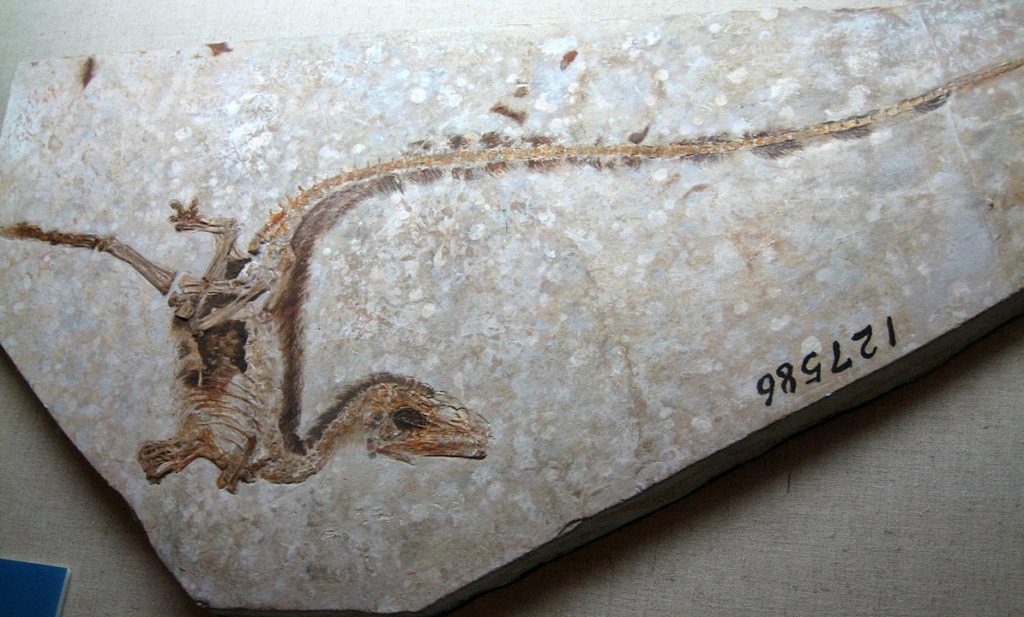
By Sam / Olai Ose / Skjaervoy from Zhangjiagang, China – Dinosaurs!, CC BY-SA 2.0, https://commons.wikimedia.org/w/index.php?curid=4209411
They first established that, yes, some dinosaurs really had feathers. These feathers came in many different shapes and sizes, as do feathers in modern birds. Some, like those of the chicken-sized Sinosauropteryx, were down-like fuzzy filaments that mainly helped keep the animal warm. Others, like those of Archaeopteryx and Microraptor, were similar to the flight feathers in modern birds. These would have enabled the animals to fly or glide. Some dinosaurs may have also used feathers for display. Caudipteryx had a fan of feathers on the end of its tail that resembled a miniature peacock’s tail.
Another observation McLain and the other researchers made was that these feathered bird-like dinosaurs truly did blur the line between creatures traditionally called “dinosaurs,” and those traditionally called “birds.” In fact, it was virtually impossible to be dogmatic about whether to call some species birds or not in many cases. The lack of apparent dissimilarity may seem to confirm the evolutionary relationship between modern birds and non-avian dinosaurs. Closer inspection, however, calls this into question.
Using statistical analyses, McLain et al were able to determine that there are major discontinuities within the group containing non-avian dinosaurs and modern birds. In other words, there are species that form clusters of “similarness”. These clusters are sufficiently separated from other clusters of species by an unbridgeable chasm. These islands of similarity can be equated to created kinds of organisms.
Separate Kinds
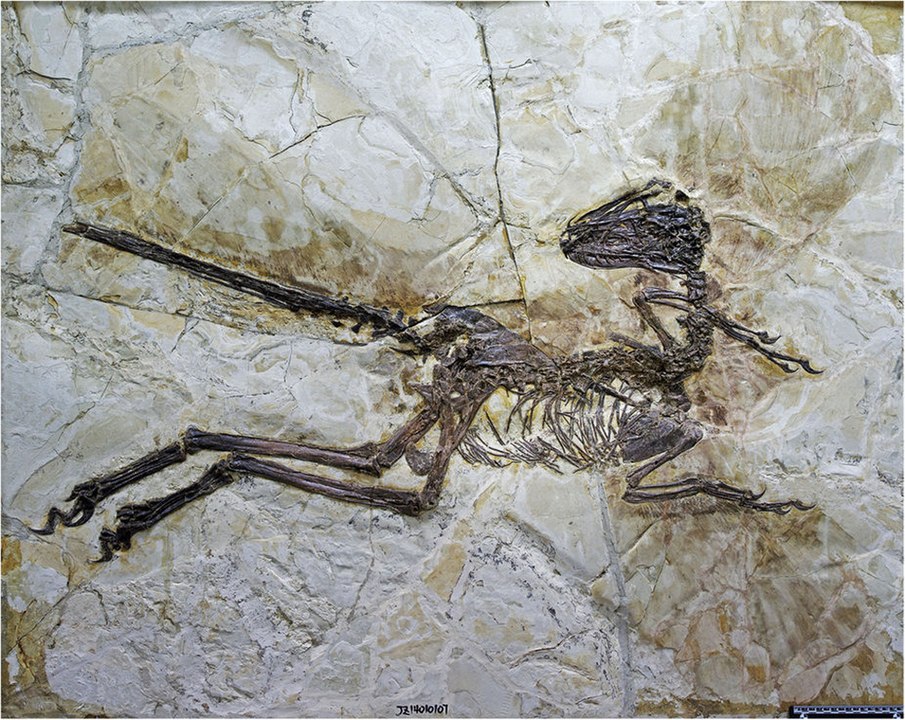
By Junchang Lü & Stephen L. Brusatte. http://www.nature.com/articles/srep11775#f1. A large, short-armed, winged dromaeosaurid (Dinosauria: Theropoda) from the Early Cretaceous of China and its implications for feather evolution, CC BY 4.0.
McLain’s research found evidence that feathered dinosaurs represent at least seven created kinds. None of these share continuity with any other created kind of non-avian dinosaur or modern bird. Some of these created kinds included the ornithomimosaur kind, the oviraptorosaur kind, and the therizinosaur kind. Interestingly, the deinonychosaur kind appeared to contain species traditionally considered birds, like Archaeopteryx, as well as species traditionally considered dinosaurs, like Velociraptor and Deinonychus. Nevertheless, even this created kind was sufficiently distinguished from other created kinds.
McLain and his team determined that while their research confirmed the prediction that modern birds belong to different created kinds from dinosaurs, it is also a call for creationists to rethink the way they understand not just how to understand the relationship between birds and non-avian dinosaurs, but the organization of life and God’s created variety as a whole. We can group modern tetrapods (four-limbed land animals) into one of four groups: mammals, birds, reptiles and amphibians. However, fossil discoveries of the past several decades of “dino-birds,” therapsids, and other mosaic organisms render these distinctions unhelpful and perhaps incorrect. Rather, we can regard birds as a specialized type of feathered dinosaur, in much the same way bats are a type of mammal.
“Forcing fossil specimens to be either ‘bird’ or ‘dinosaur’ neglects the complexity of the design patterns among these kinds of animals and can mask God’s glory, which He determined to display through them.”
Matt McLain, 2018

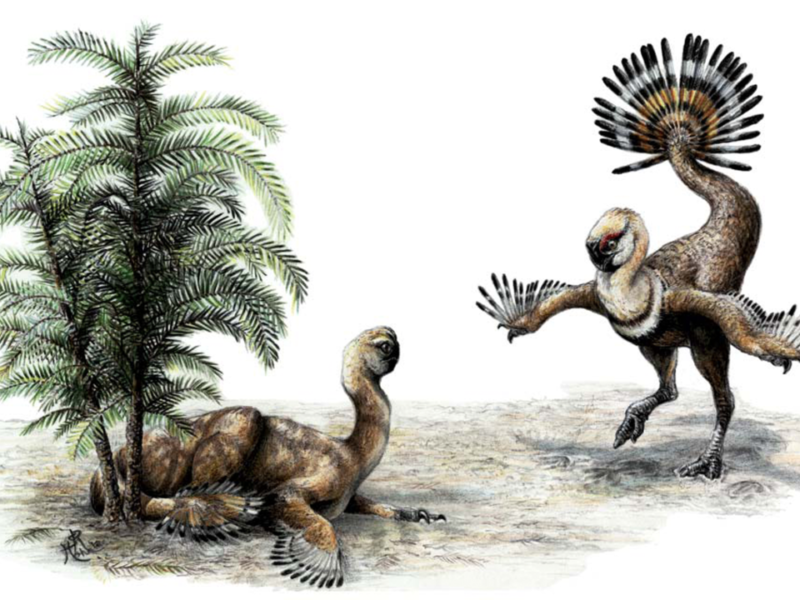



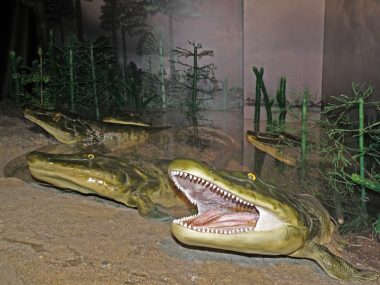
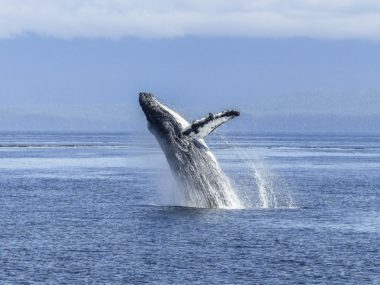





Cool article. especially by advancing the needed info of how many “theropod dinosaurs” looked like birds and had bird traits like wishbones and many clusters of traits. yet still i would insist there is error here. instead by doing reductionist investigation and using probability concepts biblical creationists like me conclude there were no dinosaurs. this is a made up division by mankind and not God on creation week. These so called dinosaurs were not lizards but simply misidentified flightless ground birds in a spectrum of diversity. However big and toothy a t-rex was just a giant ostrich. All anatomical evidence, especially from superior modern methods, will always lead to showing just how bird like these theropod dinos were. feathers and all. yes they had feathers because they were first flying birds on creation week. then later morphed into ground birds.Likewise the other dinos can be squeezed into kinds. Thus creationists must become dino slayers. Slaying the whole humbug of a dinosaur kind. We should be looking and desiring to find all theropod dinos had feathers although possible they shed them upon a new life style on the ground.
Great points to keep in mind.
But what about aquatic lizard-like dinos (such as Nessie)? One might just say these were aquatic-adapted post-Creation species. But how could one be sure this is the case?
Looks to me I may have to keep a bit more of an open mind on that than I am used to. For, it surely is easier just to go with the particular versions of the ‘kinds’ that we are used to today, even though it may well be that not all of those are certain.